Tendons are dense, fibrous structures that are very strong but not very elastic. They transmit muscle energy, particularly from the well-developed chest and hindquarter muscles, down through the legs, giving the horsepower and speed. As tendons age, tendons become even less stretchy, and as this occurs, they are less able to repair themselves if damaged. Horse tendon injury is of different types, and the problems are recovery is always long term.
Causes of Horse Tendon Injury
Tendon injuries occur when individual fibers are torn or ruptured, and it is not always easy to predict how this might happen. The causes can include:
- Direct damage, for example, from an overreach inflicted by another leg.
- Too much weight is being given to the leg, perhaps when galloping or jumping.
- A horse being exercised beyond his level of fitness.
- There is a burst of explosive energy and sudden strain as the horse gallops loose in the field.
- Occasionally, overtight boots or bandages.
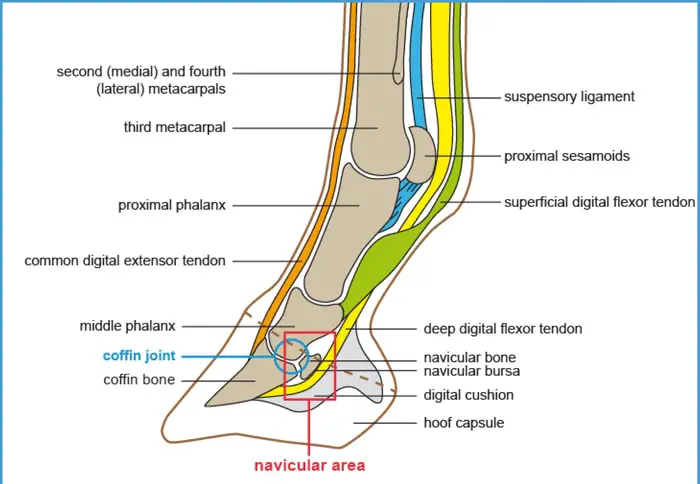
Facts About Equine Tendon Injuries
Recovery is always long-term; after the initial injury, healing does not occur to any substantial degree until the 120-day mark; it progresses slowly. 12-18 months is usual and involves many weeks of box rest.
- Usually, the horse can not be turned out fully until between six and nine months following the initial injury.
- Tendons heal by forming scar tissue- not by making new tendon tissue.
- As a result, the healed tendon is often stiffer and less flexible than before the injury.
- This causes more strain on the remaining tendon tissue when put under pressure, so the risk of re-injury following recovery is relatively high.
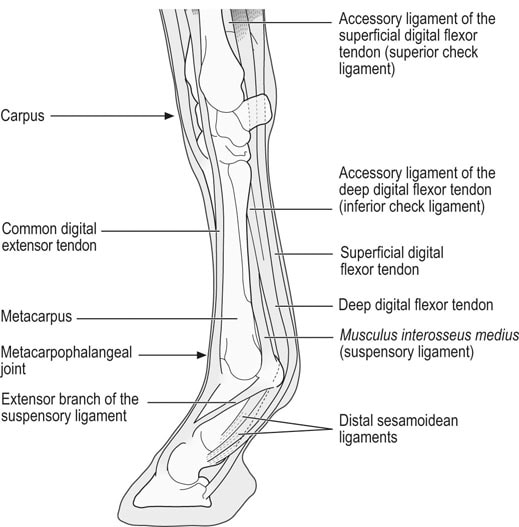
Functions of Equine Tendons
There is no muscle or flesh to protect the tendons in the lower limb, so they are much more likely to be flawed by an injury or blow to the leg.
- Check ligaments.
- Suspensory ligament.
- Superficial digital flexor tendon.
- Deep digital flexor tendon.
- Extensor tendons.
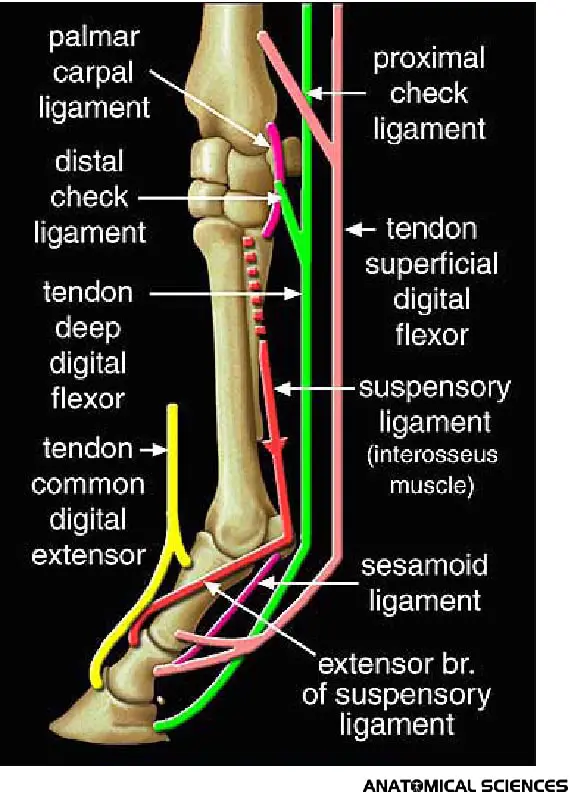
Symptoms of Horse Tendon Injuries
Horse tendon injuries can vary in their intensity, but even mild ones are worth watching out for; if you exercise a horse with a mild tendon injury before it has healed, you will probably make the condition worse. Soft tendon injuries show up as increased heat and a slight temporary thickening of the leg, but the horse may not always be lame. However, the area may be tendon if gently squeezed.
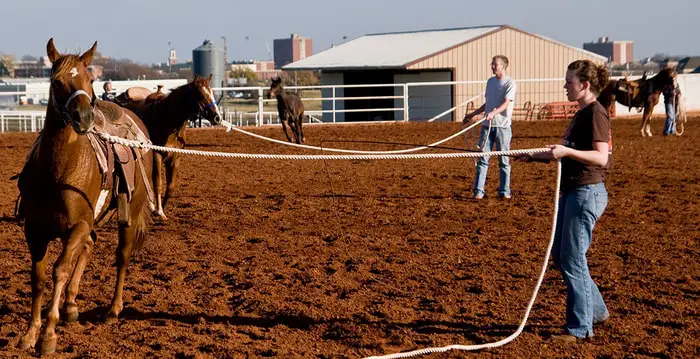
If the tendon injury is severe, there will be pain, heat, and swelling as the tendon fibers will completely rupture, and the horse will be lame.
Diagnosis of Tendon Injuries of Horse
A USG is the best way to determine the degree of injury but is guided by your vet as to the best time to do this. Scanning a day or two after suspected problems may only show minor damage, but 7-10 days later, the defect may appear much worse as scar tissue forms and healing progresses. The classic tendon injury will show up on a scan as a hole in the core of the tendon. A scan can also reveal tears and splits.
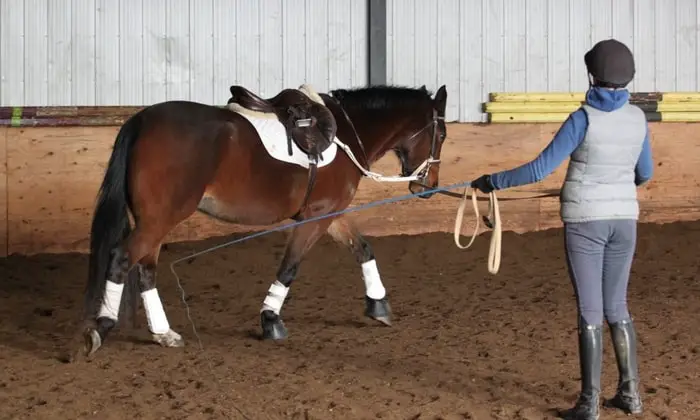
Treatment of Horse Tendon Injuries
If you suspect your horse has damaged a tendon, fast action can make all the difference to his recovery. Phone the vet and use cold hosing or therapy to reduce the heat and inflammation that can cause further internal damage. Your vet will be able to guide you about the use of anti-inflammatories, if appropriate, and careful bandaging. Therapeutic ultrasound may also help, and some vets like to consider other treatments such as laser therapy or even traditional tendon firing.
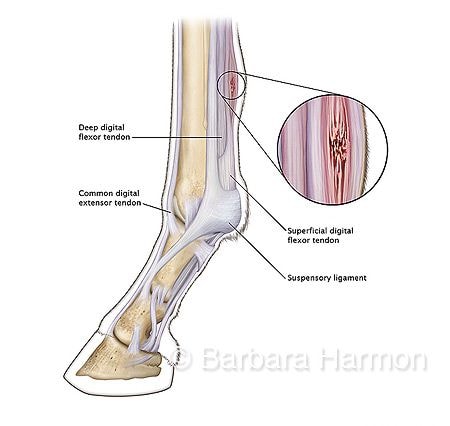
Another treatment that has recently been found useful is tendon splitting-better described these days as tendon stabbing. This option involves multiple fan-like punctures, which allow the area of injury to drain and help promote healing. It is performed on a standing, sedated horse under a local anesthetic.
Box rest will be required; sometimes for lengthy periods, followed by the controlled turnout; you must be advised by your vet, after a thorough examination of the tendon, as to when this takes place as it is a crucial time in the recovery process. A small yard or small area of a field fenced off by electric fencing is ideal. This will give your horse space to walk outside but will not be big enough to allow lots of trotting or any canter or gallop.
This should be home for your horse for two months before turning him into a field. The tendon can be examined by ultrasound regularly by your vet to tell you how the healing is progressing. Patience is needed to allow the best recovery possible. Once a tendon has settled, it usually stops hunting, and painkillers can be halted.
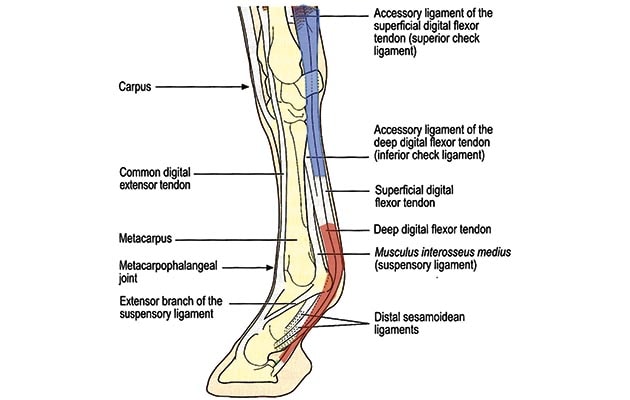
Using Bone Marrow in Treating Tendon Injury
The newest treatment of all is also one of the most exciting. The main problem with recovery is that a horse’s tendons contain relatively few cells- particularly in mature horses. This means there are usually too few cells available for damage repair.
Bone marrow has a unique part to play in cell regeneration and damage repair in that its cells have no specific function other than to develop into a range of tissue types. One of its primary tasks is to serve as a nursery for repair cells, which can then be released on demand to repair or replace tissue within the body as and when required.
The blood supply to a horse’s tendons is too poor to be able to provide enough of these repair cells via natural means, so it seems logical to inject bone marrow cells into the site of the injury. Unfortunately, when this technique was tried, it resulted in some undesirable side effects, probably because of the wide range of cell types in the bone marrow sample. Vets involved in this research have sought to improve the technique by separating the different marrow cells and using only the most appropriate type.
This process is begun by harvesting bone marrow from the horse’s sternum; for this procedure, the horse can be conscious but sedated. Once harvested, the cells are separated. The most appropriate cells are allowed to multiply in a laboratory until there are ample to treat the tendon-this usually takes around a month. After this, an ultrasound scanner is used to guide the cells accurately into place through injection into the leg- the horse needs only be sedated for this procedure. Scanning again later shows that the tendons repair themselves more quickly using this method than would be expected with more conventional treatment.
This technique is expensive, not yet widely available, and to an extent, still at an experimental stage. Not every tendon injury will be suitable for this treatment; either otherwise, there will be no area into which to inject the new cells.
How To Prevent Equine Tendon Injuries
- Build up work very slowly over months.
- Start with a slow walk over varied terrain and use uphill if possible.
- Get your farrier to check hoof balance.
- Try not to use boots all the time unless unavoidable.
- Always allow tendons and legs to warm up before exercise and cool down afterward.
Final Talk on Horse Tendon Injuries
Tendon injuries in horses occur in various situations, including when excess weight is put on a leg during jumping. Tendon injury needs plenty of time to heal correctly. In my article, I have to discuss all the information about horse tendon injury, which is very important to protect this situation and handled very quickly. Thank you for your time.